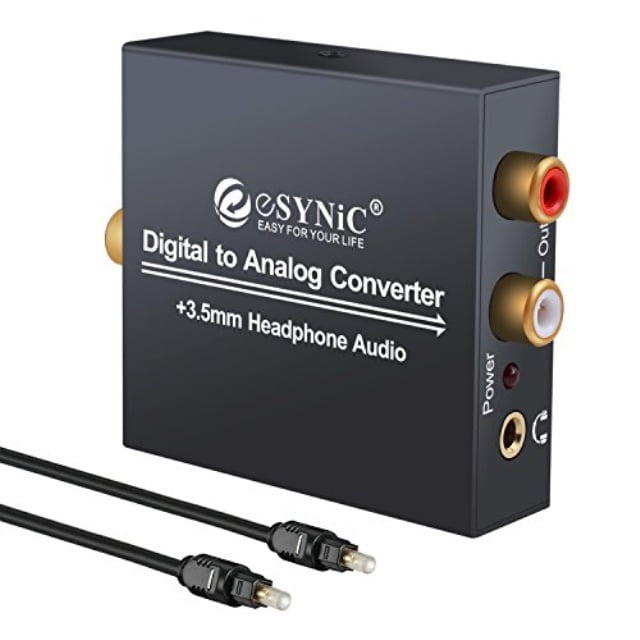
- #HOW TO CONNECT A DIGITAL TO ANALOG AUDIO CONVERTER PLUS#
- #HOW TO CONNECT A DIGITAL TO ANALOG AUDIO CONVERTER MAC#
#HOW TO CONNECT A DIGITAL TO ANALOG AUDIO CONVERTER MAC#
(Apple uses the Cirrus Logic 4206BCNZ in the retina iMac this is very similar to what was in the Mac mini: Cirrus Logic 4206ACNZ. I’ve done some very simple tests, removing the DAC from the audio chain, and using an analog output from the iMac, and not noticed any real difference, but I didn’t spend much time testing it, and it’s very hard to do a blind test I’d really need two iMacs to test it correctly. I still use the DACMagic, but if I took it out of my stereo chain, I probably wouldn’t notice as much difference. However, now that I have a retina iMac, I have a feeling that this better, more expensive computer is likely to have a better internal DAC.
#HOW TO CONNECT A DIGITAL TO ANALOG AUDIO CONVERTER PLUS#
(The current model is the DACMagic Plus (, Amazon UK), which is a bit more recent.) I found that it markedly improved the sound of the music coming from the Mac mini, which was the computer I was using at the time.


So, do you need a DAC? I happen to have one, a Cambridge Audio DACMagic, that I got for review about five years ago. So the analog conversion of a ripped CD should sound like that CD the sound shouldn’t be altered by the DAC. In fact, they should sound the same DACs shouldn’t alter the sound of the audio they convert, they should only convert it correctly. So, if your computer – or other playback device – is cheap, then an external DAC might make a difference.ĭACs can run from less than $100 to many thousands, but, according to many people who have listened to different DACs, they generally sound the same. In other words, a desktop computer may have a better DAC than a laptop. The smaller the computer, the less likely it is to have a good DAC. So if you do choose an external DAC, you need to make sure it has the connectors you want to use.īut if your computer already has a DAC, then why would you add an external DAC? Many computers scrimp on the quality of the DAC chips they use.

Some will have just have USB inputs and others will also have Toslink (optical audio) some will have standard RCA jack outputs, while others will also have XLR outputs. The term DAC also applies to a standalone device, which is essentially a housing for one or more DAC chips, and the necessary circuitry to connect the device to both input and output.Īll standalone DACs have digital inputs and analog outputs. Some AV amps may contain one per channel so if your amp can play 7.1 audio, it might have eight DAC chips. Some sound cards, and most off-board DACs, contain two of them, or for each of the stereo channels. In short, anything that needs to convert digital audio to analog has a DAC.Ī DAC, in its basic form, is merely a chip. If you have an AV receiver, that has a DAC, as do optical disc players (CD, DVD and Blu-Ray). You’ve got one in your computer (it’s one or two chips on the sound card), in your smartphone, your iPod, or any other device that plays music. (DAC chips aren’t new, but DACs as standalone devices have only become common in the past five years or so.)ĭACs are present in many devices. This relatively new element in the hi-fi audio chain converts the digital stream of audio from your computer, or other digital source, into analog music that your amplifier then amplifies before sending it to speakers. A reader wrote me recently asking my about DACs digital-analog converters.


 0 kommentar(er)
0 kommentar(er)
